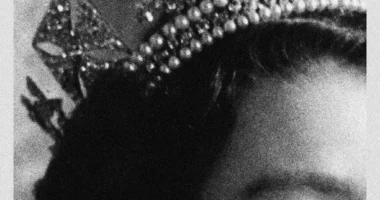I was speaking in tongues. I was lying on my side on a plastic-covered couch, my neck craned over its arm, my mother beside me consulting with a doctor, and I was speaking in tongues. Some spirit was moving through me, causing me to regurgitate all that I had seen in the years leading to this moment. This spirit was not the Lord or any other celestial being. I knew exactly what I was referring to with each word and could envision the source material as my lips pinballed through my memory. It was, to my surprise and dismay, months and months of quotes and quips I had read since the inception of the Facebook News Feed, now bubbling up from my subconscious in an inscrutable cacophony of youthspeak.
This wasn’t my first trip to a hospital, but the verbal brain dump was new. I had resisted care too long this time, and my ability to keep it together on the outside gave way to this. That I appeared to be speaking in tongues was, of course, alarming to those around me, and as far as I can remember, it sped up the hospital intake process. No one ever asked me about the contents of my ramblings, though. Maybe it was beside the point, but it was perhaps a harbinger of a growing problem: the tonnage of non sequiturs social media pumps into our minds on a daily basis and the psychic noise it can create.
Facebook introduced its News Feed feature in September 2006, five months after my bipolar I diagnosis and first hospitalization and two years before this explosion of seeming gibberish. This timing is notable because my brain was still getting accustomed to its new reality. This new reality meant daily doses of high-strength prescription medication, navigating my social landscape with newly delicate sensibilities and consuming hundreds of updates from my friends. While I do not believe that my social media usage caused my illness, the heightened noise created by the News Feed had an obvious impact on my 2008 episode.
The way I understand my bipolar disorder is that it doesn’t so much create as reveal, peeling me away until I am nothing but raw subconscious activity. In this moment in 2008, it revealed, among other things, a propensity for addiction. The addictive potential of social media is well documented and keenly felt. My proclivity toward addiction — manifested in, among other things, nicotine and love — leaves me particularly susceptible to the allure of the scroll, the double tap, the committing to subliminal memory of every detail I consume. Though I now make an effort to not let myself be consumed by my online presence and network, sticking to casual usage does not stop the noise, and by the time it is loud enough for me to consciously hear it, my brain is irrevocably entrenched in maladaptive thought patterns that put me at risk of ascending into madness.
Chaos brain isn’t a medical condition, but I believe it is a threat in itself — a precursor and warning sign. In fact, while research is still emerging in this area, a 2011 paper chronicled three cases of individuals who, with no known history of prior major psychiatric disorder, presented for psychiatric treatment because of psychotic symptoms that appeared while they were immersed in computer-mediated communication, such as social media and chat functions. This type of communication led to the emergence of “a ‘hyperpersonal’ relationship with a stranger, mistrust of the aims and identity of the other party, blurred self boundaries, misinterpretation of information and undesirable personal exposure in cyberspace,” the paper said. A much larger study has linked addictive social media use to attention deficit hyperactivity disorder, obsessive-compulsive disorder and anxiety. A 2018 study showed that social media usage predicts detrimental changes in mood in people with and without psychosis. Sensitivity to social media usage may fall heavy in hands like mine, but it has the potential to affect a wide array of people all the same.
A broad research review from 2020 found that evidence from different types of studies implicates smartphone and social media use in “the increase in mental distress, self-injurious behavior and suicidality among youth.” The review proposed a number of approaches, including a harm-reduction approach, and described strategies such as reduced screen time, good sleep hygiene (like no screens one to two hours before bed) and nonjudgmental communication in therapeutic and home environments. I have lived in these spaces long enough to know that well-intentioned harm-reduction strategies may not be enough. These do not fully solve for daily or hourly doses of content injected straight into the subconscious or the performative nature of posting. No trigger has been a more consistent presence in my bipolar disorder than ordinary social media usage.
But so many Americans are dependent on social media for community and meaning, and going completely off the grid may not be sustainable. It certainly isn’t for me. My weariness with, or my fear of, the noise in my brain does not stop me from participating in the apparatuses that contribute to that noise. How do we address these ill effects via therapeutic remedies?
No method of harm reduction mentally prepares any of us for innovations to come that will shape our daily lives and our minds. Those things continue to happen, and our consent is tacit at best. Tech companies can no longer plead ignorance. Now, inadequately addressing the fact that their services make people sick may be a business decision. The Facebook Files, a Wall Street Journal investigation published last year, reported that internal research at Facebook showed Instagram to be harmful to the mental health of teenage girls. In the same month, Facebook, which has since renamed itself Meta, announced a $50 million investment over two years in research partnerships with respect to responsibly building its latest venture, the metaverse. A portion of this $50 million funds research on digital literacy and digital wellness. This number, I gather, is supposed to be impressive, but it’s a minuscule percentage of the at least $10 billion invested in the metaverse annually.
Many of us once saw social media as an amusing time waster, a virtual space we populate and control. But how many times have I picked up my phone to open Instagram without even noticing? How many hours have I spent mindlessly scrolling, and what algorithmically chosen selfies, platitudes, memes and ads now occupy precious real estate in my brain? In participating, we give up control to the higher power of the algorithm. I, like many others with my diagnosis, have imagined and conjured religious delusions. They are no longer as fearsome as the nightmares social media can unleash in my mind. The algorithm is insatiable, feeding off our rapt attention and engagement. There are no playbooks or best practices for navigating any of this — for being a person in the virtual world — or at least no good ones.
As with most fallout from corporate power, we must speak a new language when it will not. This purportedly unsolvable problem requires a solution outside the system. How about this? What if we spent more time creating for no one? Social media provides a platform for artists and nonartists alike to engage in the act of creation and creativity. And creativity is well known to have such healing benefits as improving mood, reducing stress and anxiety and boosting self-esteem. When we focus our creative energy on a system that attacks the very things creativity fosters, we are left with acts of creation that make us sick. Removing the performance of it all — writing, making videos, drawing or using any other creative tools at our disposal for ourselves — may create an antidote to the destructive qualities of social media usage.
I haven’t spoken in tongues since that day in 2008. My theory on why is simple: I’ve amassed hundreds, likely thousands, of pages over months and years since then of writing to no one. I’ve dedicated myself to unpacking my own story, mostly out of sight of semicurious onlookers and algorithms. Without an audience in mind, I was able to write with fierce honesty. The more I wrote, the more space I took up in my own mind. Grounded in self-knowledge, away from thoughts of engagement, comparison and chaos, I could re-enter public virtual spaces with more confidence, calm and empathy.
My brain still tends heavily toward anxiety and paranoia, no matter what I do. But the time and energy I have spent creating for no one have been a salve and a shield, allowing me to participate at all. Shifting our creative efforts even a little bit offline and understanding our own creative language more deeply seem the most effective ways to wrest power back from those who profit off our misery. That power means agency, freedom and, in the best cases, healing. Neither the tech billionaires nor the algorithms that power their favorite moneymaking toys will save us.






